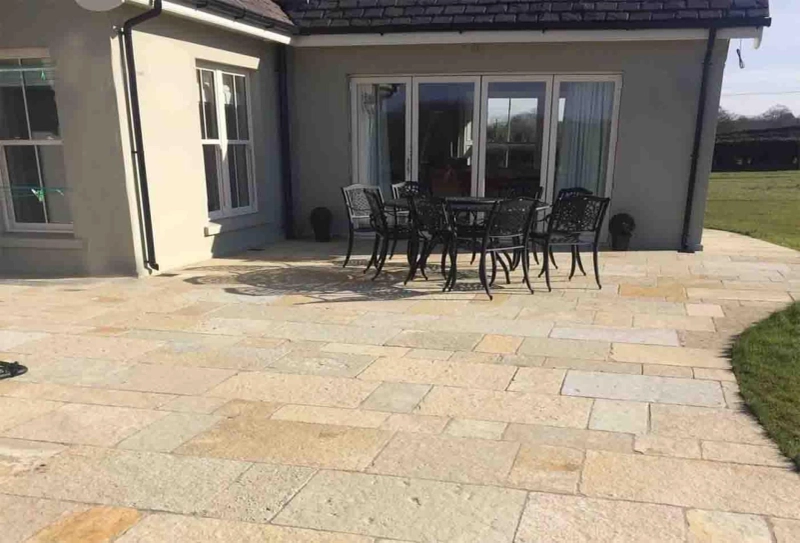Lime Stone - What is it? - A Detailed Description
https://www.work-tops.com/a/expert/lime-stone
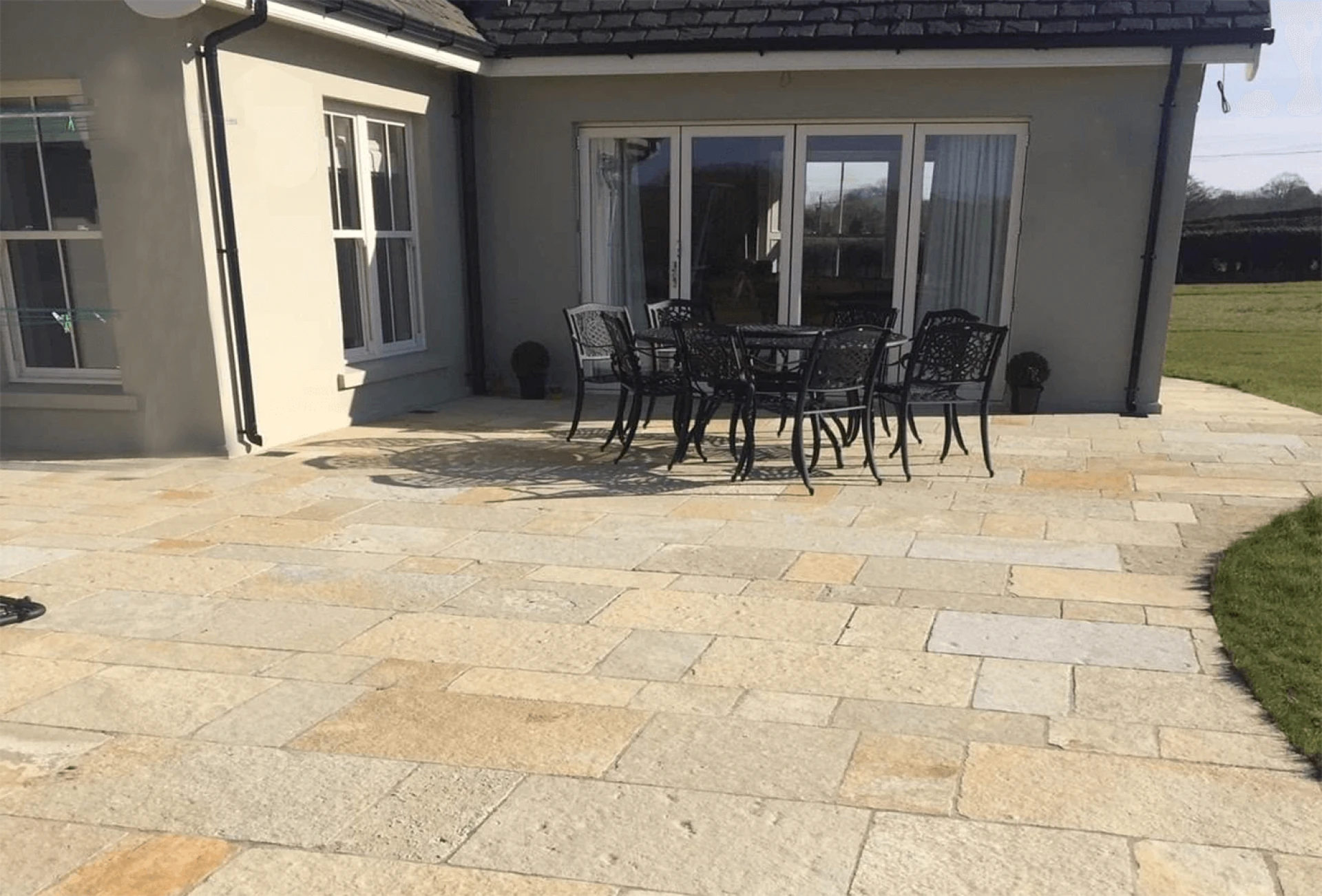
Limestone is a sedimentary rock composed of different minerals, mainly calcite and dolomite that are deposited as rocks from fossils. Regarded as a symbol of strength and resilience in architecture, while still looking very elegant, it can be used to make everything from a coffee table to gigantic structures, making them incredibly versatile in their properties. Limestone has been able to retain its popularity because it has become a go-to stone for people in different fields. Because of that, it will most likely continue to be a popular choice forever. The stone colors of lime stone in the current market are white, yellow, grey, blue, beige, and cream, which can be seen in finishes like honed, tumbled, and polished.
Introduction
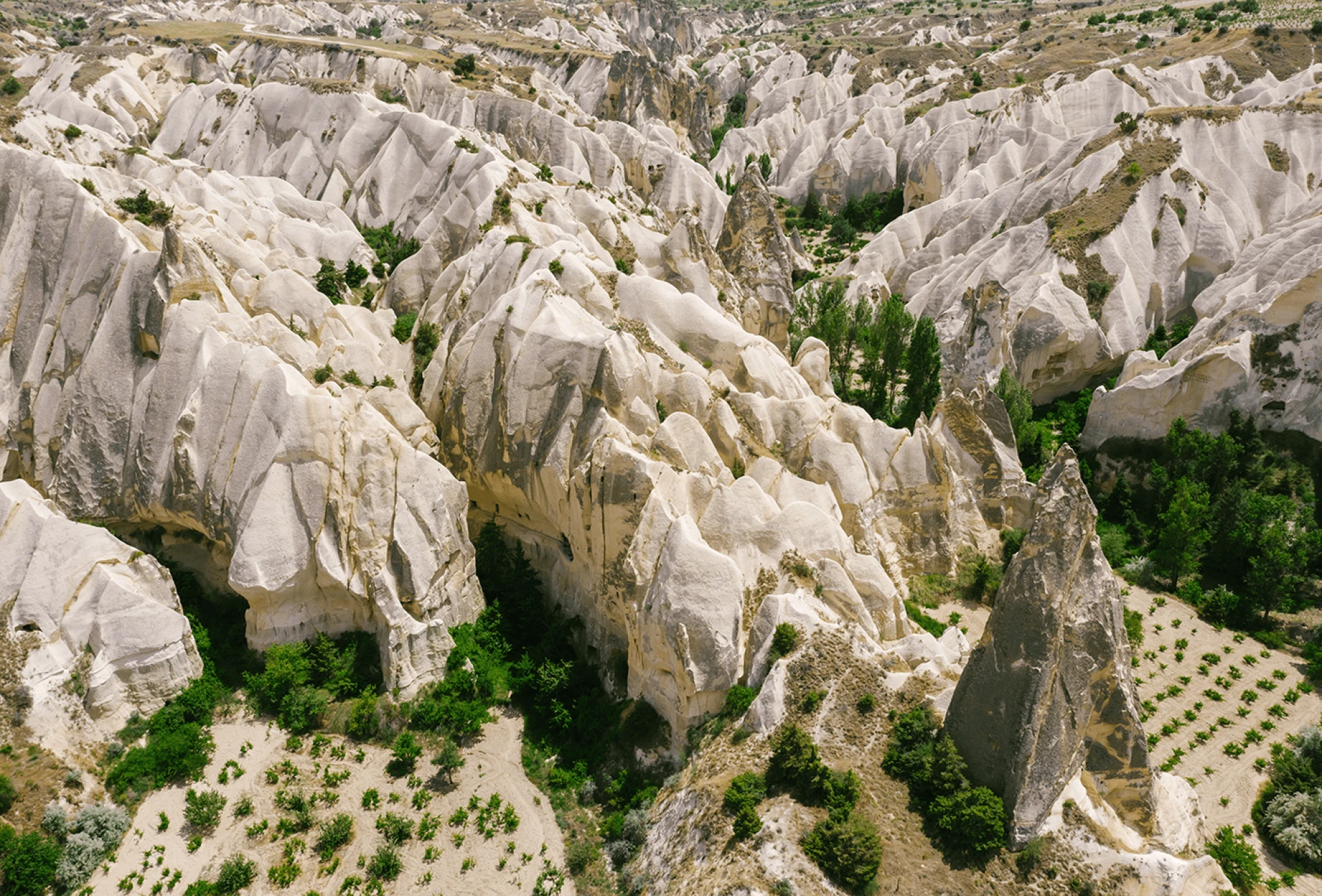
Limestone is a sedimentary rock, generally light in color. It is primarily composed of minerals like aragonite and calcite, which are different crystal forms of calcium carbonate (CaCO3). Their origin can be traced back to biological and chemical processes that occurred in the marine lifeforms, hundreds of millions of years back; formed either from the build-up of organic debris like coral reefs, algae, faecal materials, shells, etc or the process of chemical sedimentation like calcium carbonate precipitation from marine water-bodies. This common rock is found all across the world and pretty much contributes to all our daily life activities from minerals in the water, the food we ingest, and cosmetics we apply to the interior wall cladding of our homes.
Composition of Limestone Brick
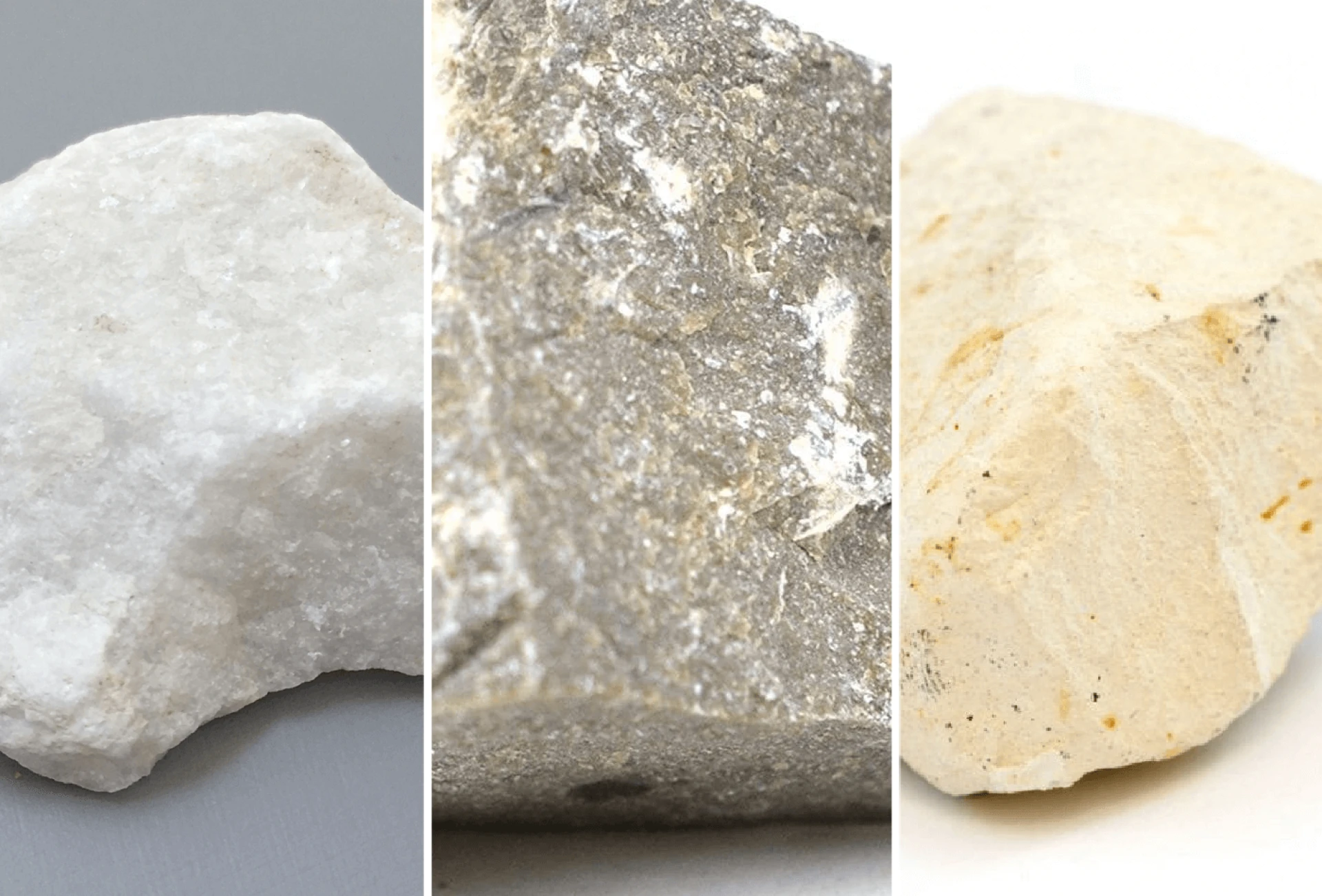
A limestone is a crystal form of calcium carbonate, prevalent either as aragonite or calcite. Every lime stone comprises 50% calcium carbonate at the least, by weight, significant amounts of magnesium carbonate (MgCO3), which is also known as dolomite, and negligible portions of clay, iron carbonate, siderite, sulfate, feldspar, pyrite, and quartz. Pure lime stone is exclusively white or almost it. Upon getting mixed with impurities, they exhibit a range of colors from pale to beige, yellow, grey, or blue.
Historical Significance
Limestone was admired by ancient sculptors for its work simplicity and excellent carving properties. There is evidence of redefined sculptures made of lime stone by The Maya people from the preclassic period, which dates back to almost 200-100 BCE. These sculptures were carved with social and political messages the king wanted to convey to his people. The Maya would also decorate the ceilings and cover walls of sacred buildings with limestones. It regained its popularity in the late 19th and early 20th centuries where it was used for building banks and train stations, exteriors of skyscrapers etc. Many medieval castles and churches in Europe also show traces of it.
Limestone Tiles Floor and Much More
- It is very commonly used in architecture as cladding stones for interior wall cladding, memorial headstones, monuments, and bathroom cladding.
- In modern-day houses, it can be seen being used as decorative items, kitchen countertops, bathroom worktops, cabinet surfaces, shelves, upstand in kitchen, kitchen windowsill, kitchen island, limestone tiles floor, backsplash, stairs, etc.
- As a raw material for the production of cement, mortar, slaked lime (calcium hydroxide), and quicklime (calcium oxide).
- Agricultural lime a.k.a. aglime, garden lime, or agricultural lime stone made out of pulverized limestone is used as a soil conditioner to neutralize acidic soils.
- In its crushed form, it is used as a solid base for road preparations.
- In the manufacture of soda-lime glass.
- It is used as an additive in toothpaste, papers, plastics, tiles, paint, etc.
- In underground coal mines, methane explosions are suppressed with the help of limestones.
- In purified form, it is added to eatables like bread and cereals as a source of calcium.
- Incorporated with poultry and livestock feed as a calcium supplement.
Natural Characteristics of Limestone Worktop
Grey Limestone and Other Colours
Based on frequently observed hues, they are graded into three categories: white, beige, and cream; Lighter shades make the kitchen look airy and spacious.
Darker shades like Grey and blue limestone flooring are suited for busy areas like a kitchen.
Brown and red; when embedded with impurities, it results in these shades. With an increase in the level of impurities, they even appear rose-coloured. These earthy tones make kitchen and bathroom worktops look very elegant.
Crumbling:
They show some amount of brittleness. Causes could be a breakdown of the binder, the effect of external factors, or the innate fragility of the stone itself.
Durability:
Limestones are extremely durable but when exposed to extreme natural effects of wind, rain, and thermal instability, they seem to deteriorate. It happens because this stone being a carbonate rock shows high reactivity upon coming in contact with even mildly acidic rainwater. However, with a kitchen worktop, it won\'t be as problematic since they are indoor surfaces.
Staining:
By nature, this stone has a very porous surface. Common staining agents are rustic stains of metals, Bronze and copper stains from unattended copper salts, dyes and inks, organic stains from tea, coffee, acidic fluids, etc. Proper sealing before installing kitchen worktops as well as at regular intervals after doing so is thus a mandate.
Chipping:
Chopping boards are to be used permanently in order to avoid cuts, knocks and scratches.
Heat Tolerance:
Limestone work-tops show a great deal of heat tolerance which means your countertop will not be damaged upon placing a hot pan or dish directly on the countertop. However, it is advised not to leave hot and heavy objects for longer periods and avoid dragging them over.
Feasibility:
They\'re cheaper than other natural stones like granite or marble.
Finishes:
Polished Finish:
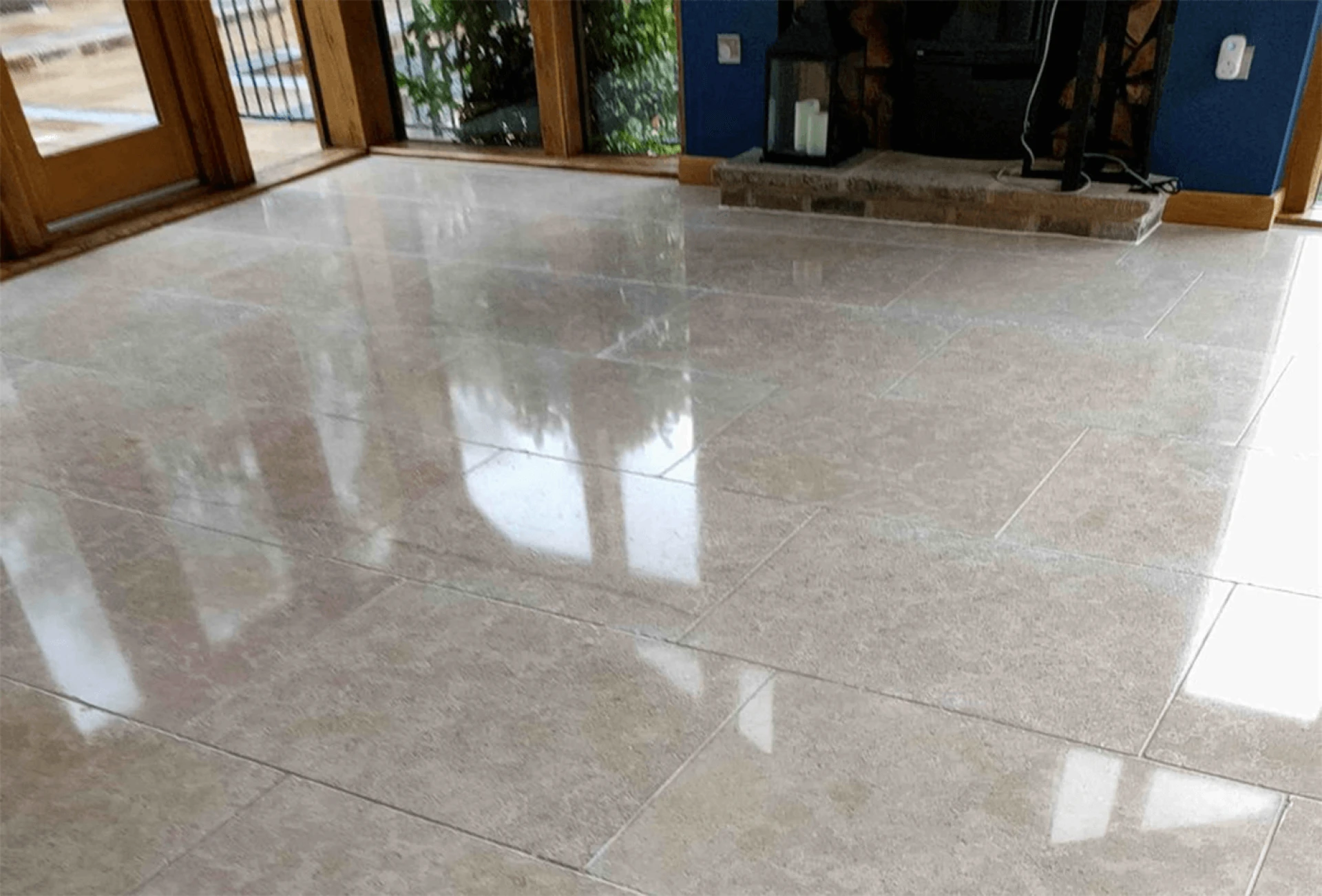
This type of finishing of stones makes the surface shiny, enhancing its quality of reflection. It is achieved by rubbing the surface of the stone with a series of increasingly fine diamond grit pads. They are best kept with a sharp edge. The level of perfectness in a polished lime stone is decided by the density of the stone. The softer ones tend to wear and tear within a shorter duration of being polished. The harder ones respond well to being polished, comparatively.
Honed Finish:
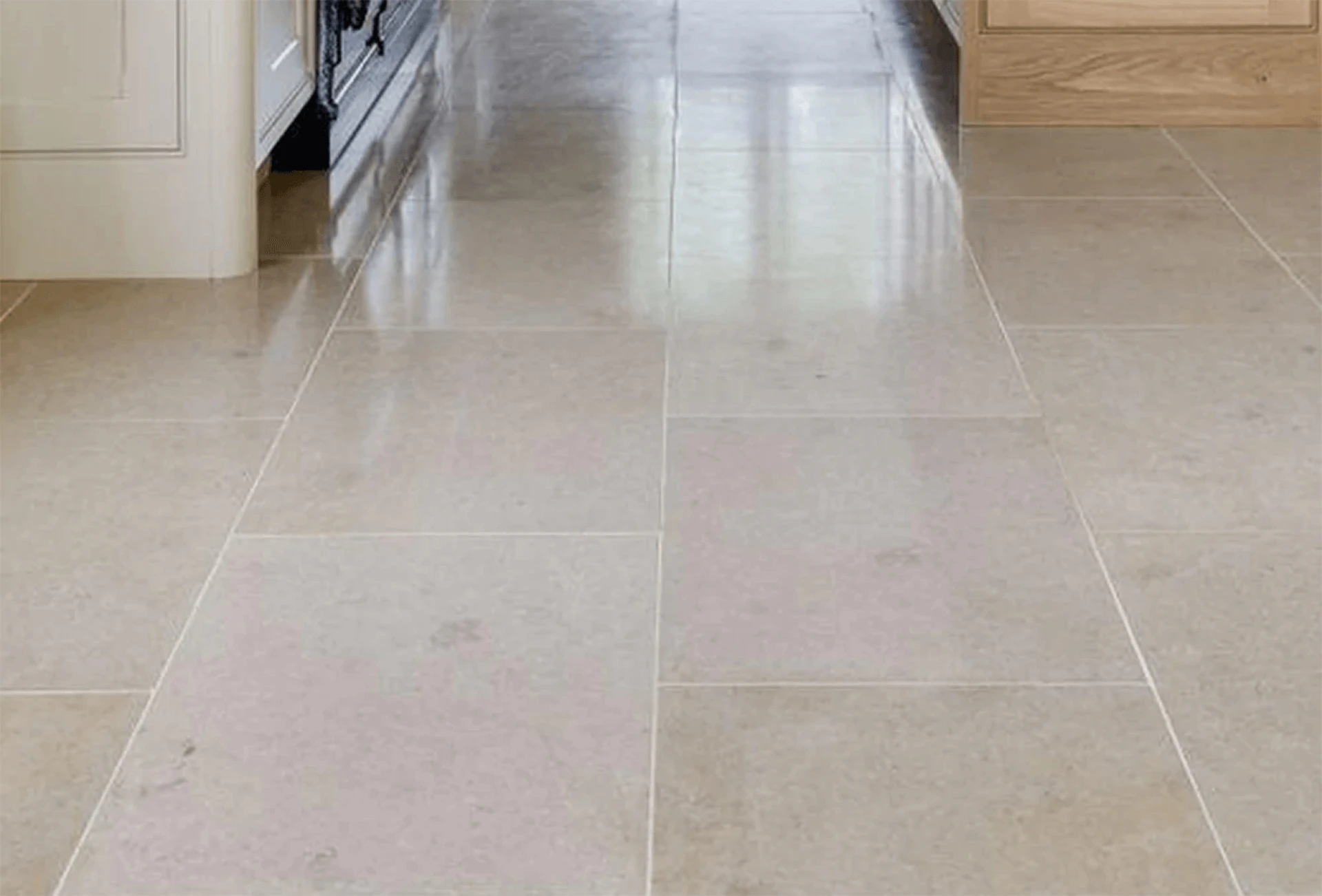
A honed finish is created similarly to the polished finish but with a coarser grade of grit which makes the stone worktop appear matte, less glossy and reflective but still smooth. Honed tiles are the most in-demand. The degree of honing depends on the purpose. For example, they are honed to a lesser grit if they are being used in an area where it should not be slippery like bathroom limestone tiles floor.
Limestone Tumbled:
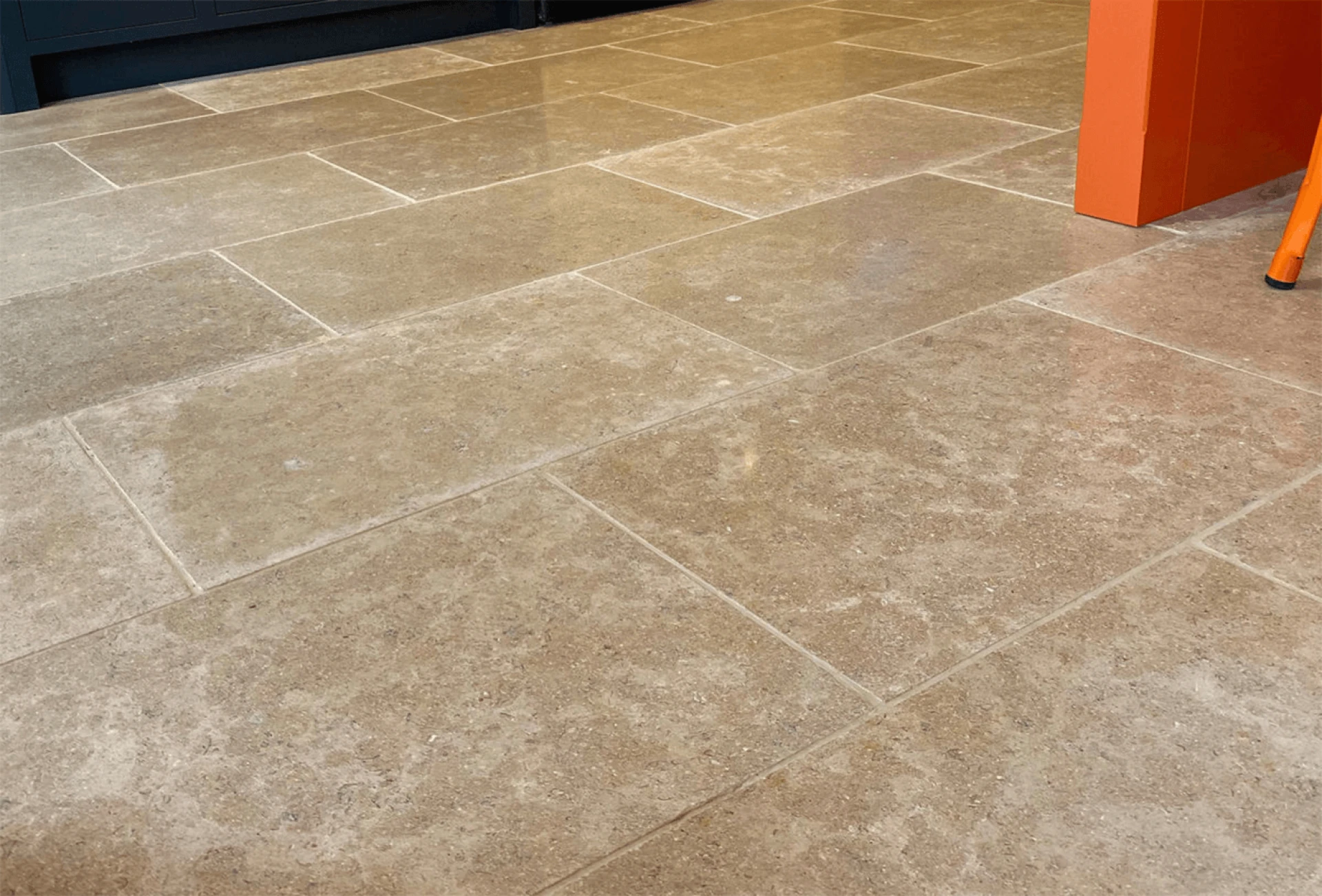
This type of finish gives the kitchen countertops an aged, weathered, and bleached look. This type comes with round edges. Tumbled tiles are best known to suit old, traditional looks. However, it can make modern furniture look exquisite if handled professionally.
Brushed Finish:
This finishing of stones is brought to life by brushing the stone with hard nylon or steel brushes. This increases the capability of the surface to withstand scratches and marks. This brings about a slightly textured surface.
Flamed Finish:
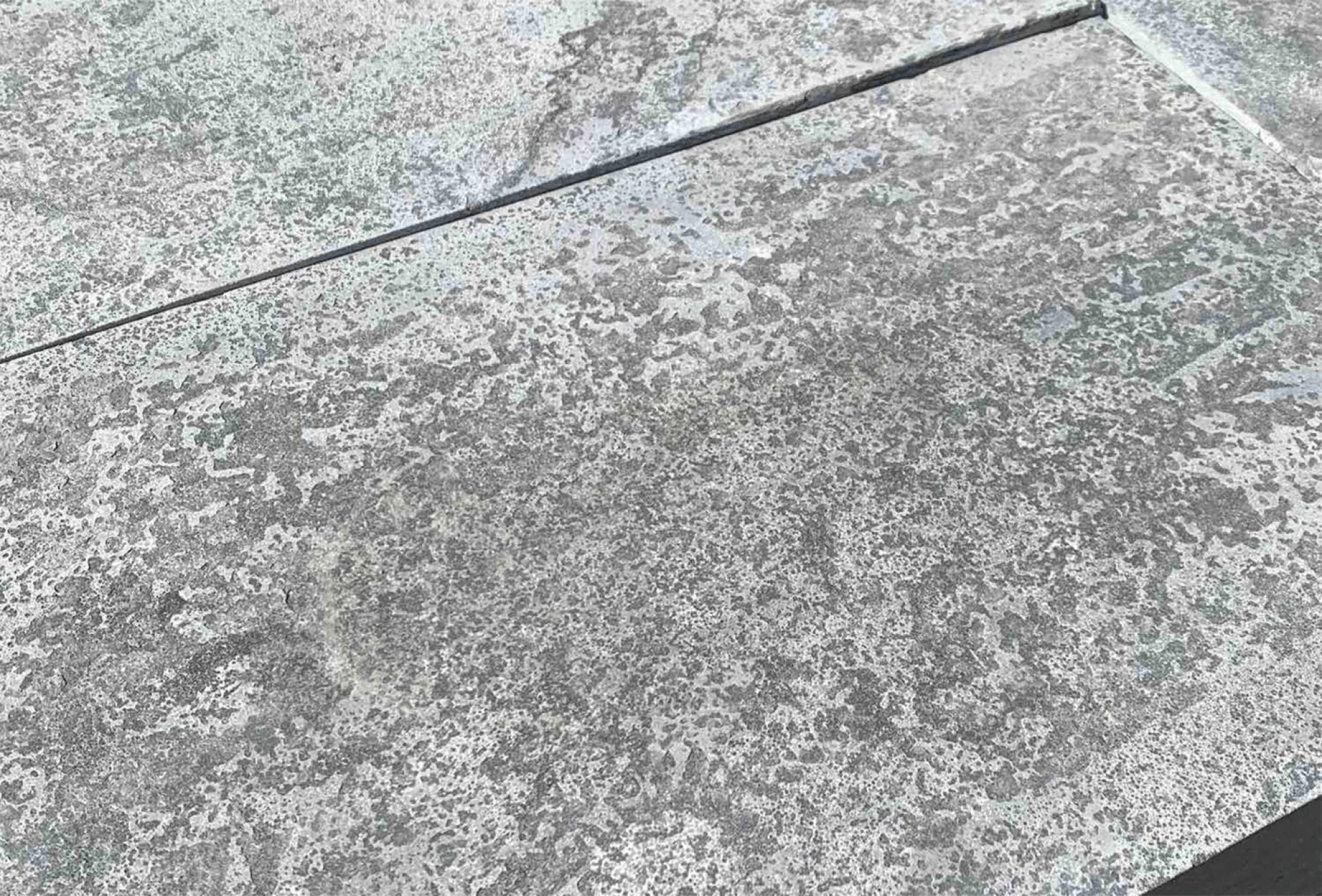
To create this finish, an oxy-acetylene torch is passed over the stone surface, quickly followed by pouring cold water under pressure that leaves the top of the stone fractured. Only some quarries have this specialized technique which creates an anti-slippery surface ideal for public areas and terraces.
Bush-hammered:
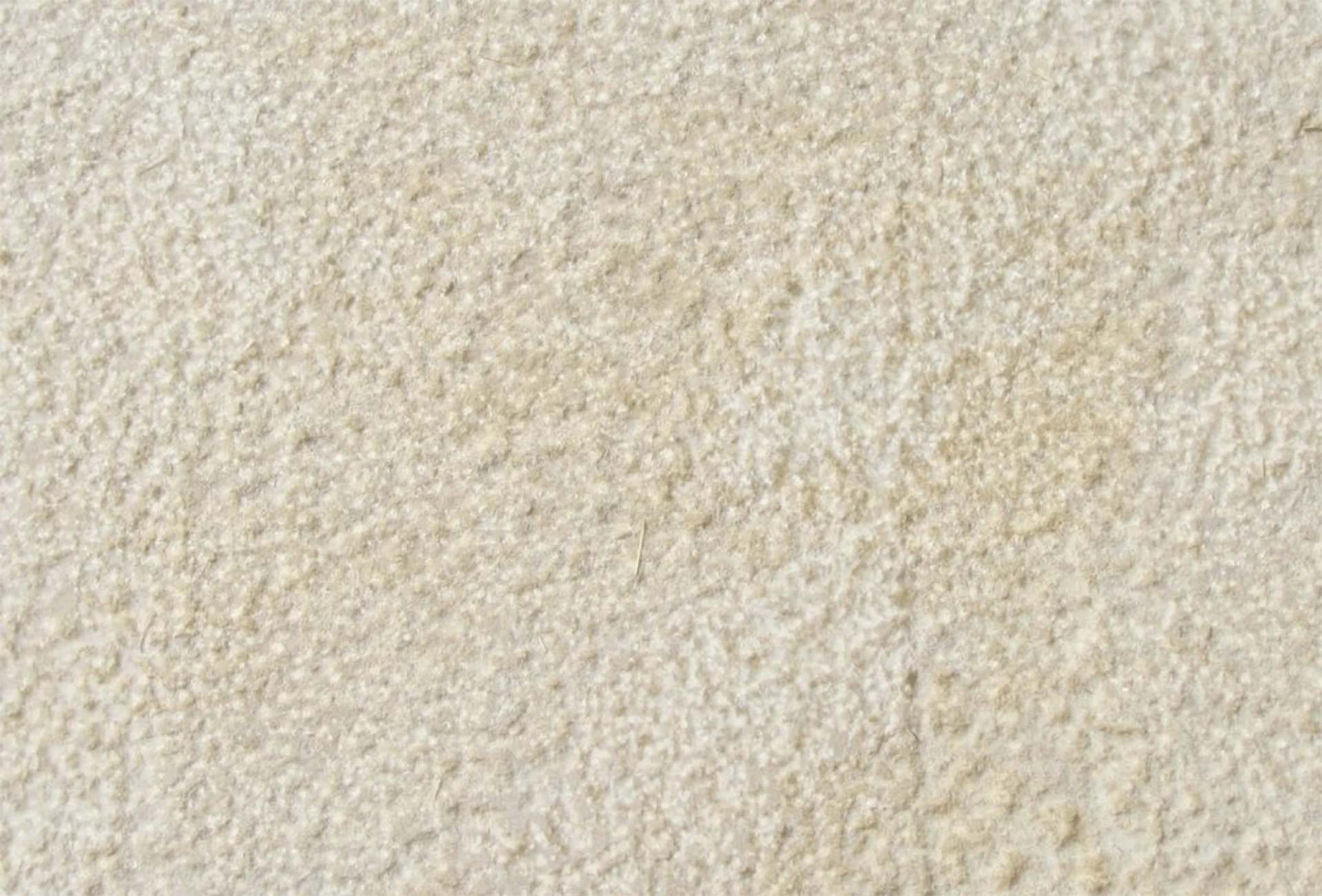
This finishing of stones is achieved by hammering the stone with a sequence of steel points that breaks up the surface and creates a scarred look. This is quite similar to a flamed finish and is also used in creating slip-resistant surfaces. Based on the requirement, it can be done to a greater or lesser degree.
Fabrication and Installation
Lime stone Fabrication and installation are best advised to be done with verified professionals with the right technology. Our registered KBB network fabricators have the experience in installation and knowledge of the product to give the best results. Our KBB network offers planning, designing, and implementation of the design that perfectly suits creating your dream home.
Kitchen or Bathroom Remodeling Project
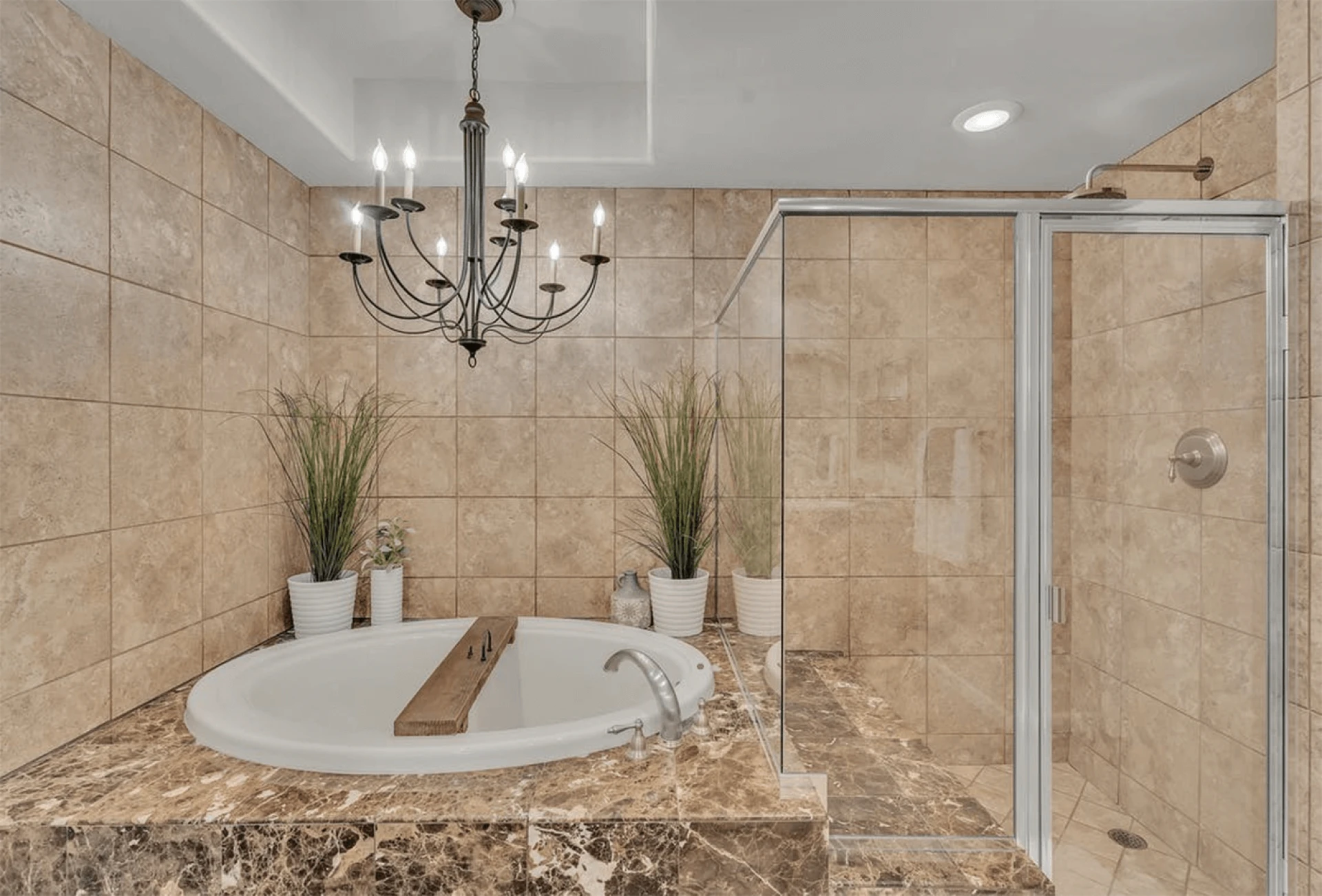
Remodel your kitchen, bathroom, or bedroom by choosing a stylish contemporary-looking Limestone or traditional classic countertops surface. Each stone slab may differ from one another in color and veining. This is because various minerals are deposited in the natural stone. One cannot find two similar-looking lime stone slabs as their color scheme and patterns are never monotonous. They are decided at the discretion of nature.
Maintenance
They require a particular cleaning practice so the sealant does not wear out. The sealant is added to the kitchen countertops, to keep the spillage during cooking from being absorbed into the grains. Discoloration and marks are a threat, thus an immediate wiping is recommended to prolong its life. Careless use of chopping boards can cause the sturdy stone to chip which could deteriorate a beautiful centerpiece of a Kitchen. To keep the surface gleaming, harmful chemicals, acidic chemicals or detergents, vinegar, lemon, and undoubtedly chlorine bleach are to be strictly avoided. For usual cleaning, clean soapy water or pH-neutral cleaning liquid and wiping with micro fiber cloths can get your kitchen or any lime stone surface to keep looking attractive, and last longer. Avoid any temptations to scrub the stained surface. Once you are done with the cleaning, it is important to wipe the surface dry using a microfiber cloth because any remains of water can dull the color and may run the risk of discoloration.
Maintaining worktops requires regular cleaning, not only after meal preparation but also for placing handbags and briefcases, which can spread bacterial contamination easily.
Cleaning Watermarks:
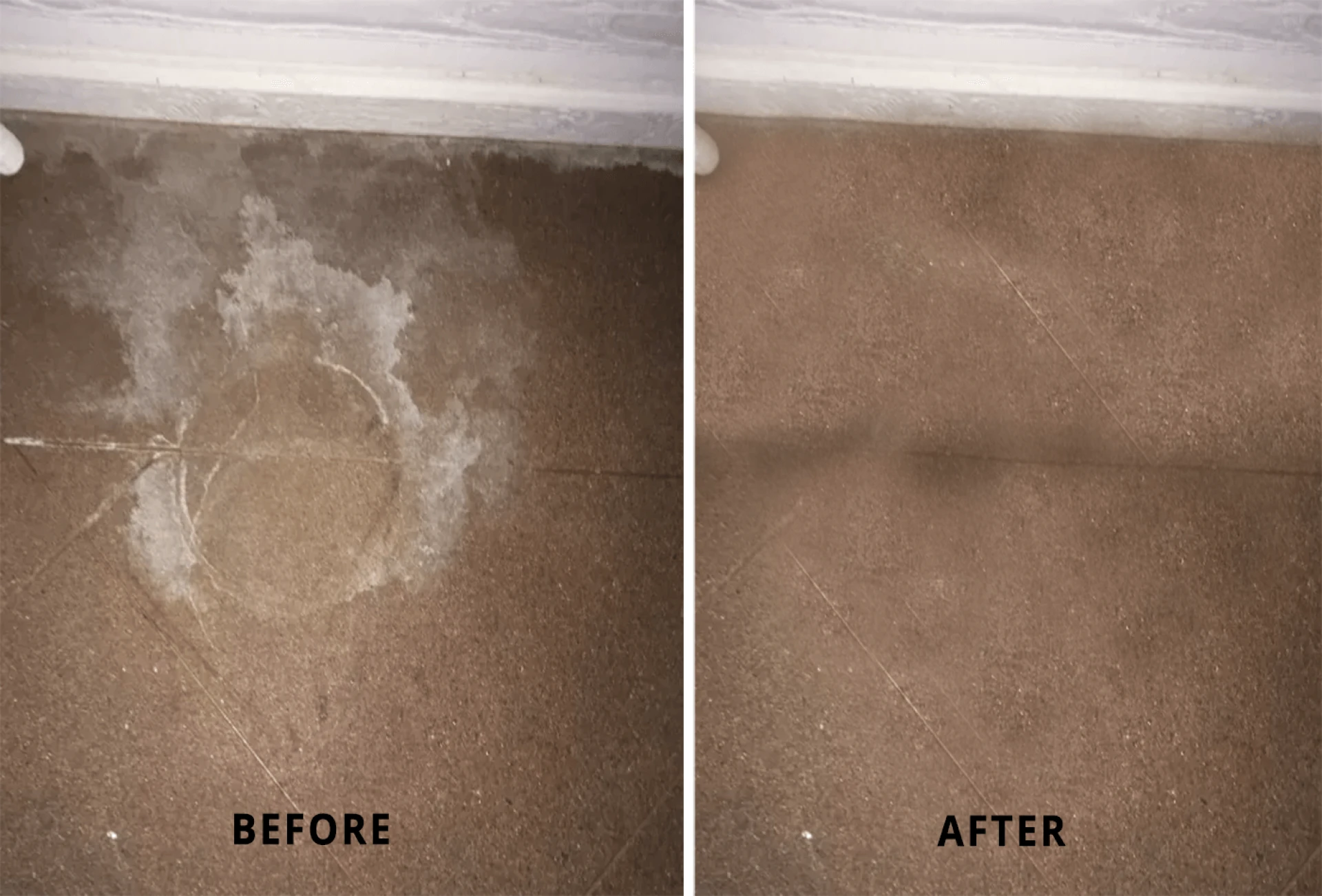
Watermarks usually disappear on evaporation but in the case of porous material, the spill might result in a dark and discolored area. They can be removed with a soapy liquid wipe followed by complete drying of the surface.
Cleaning Oil Stains:
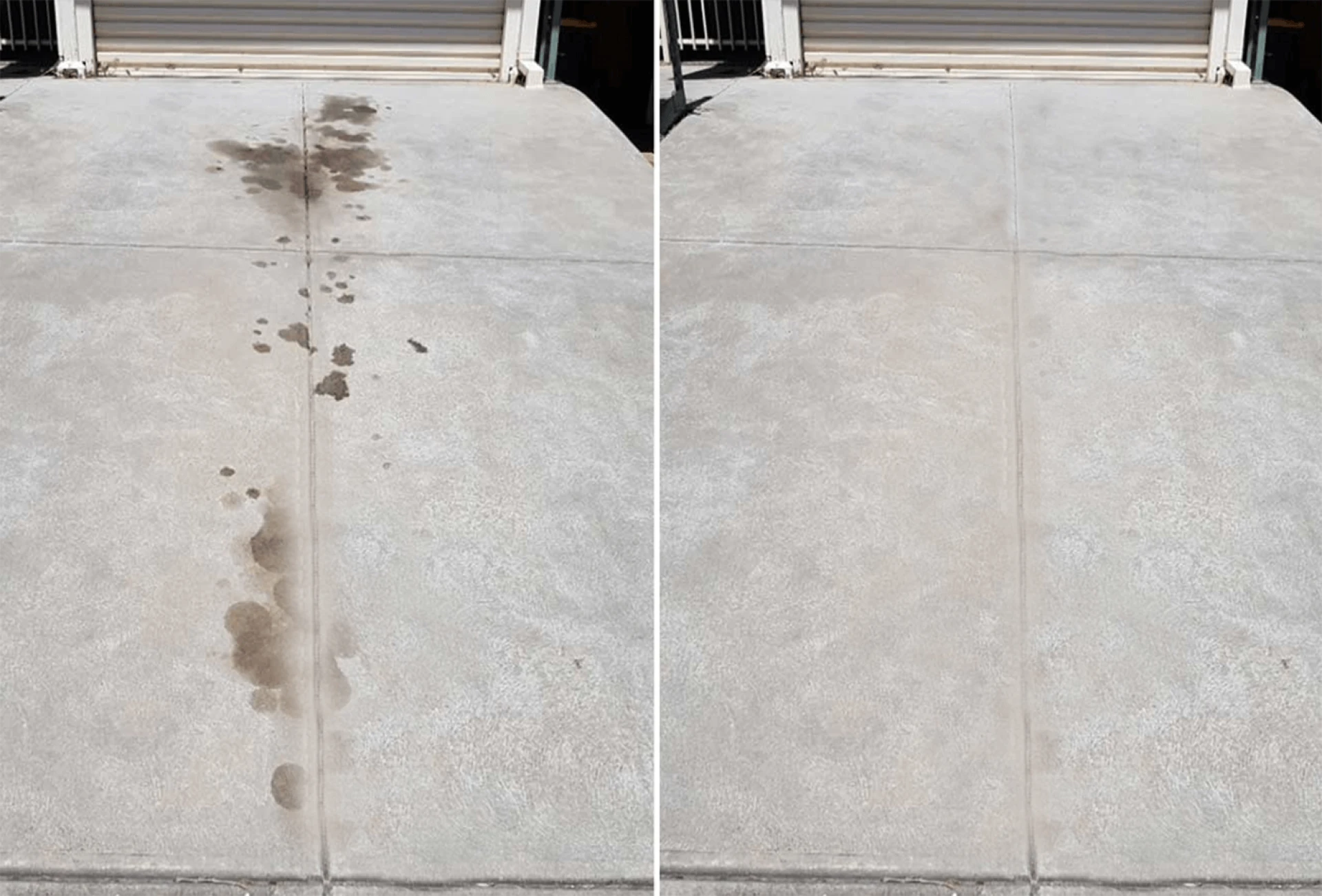
A good solution to take out those tough grease stains is to use baking soda and water. Remove the residue with a damp cloth and dry the surface, repeat the process for removing stains of large circumference and deep pigmentation.
It is always better to prevent the circumstances rather than fix them, so be thoughtful of how you are using and what you are placing on the stone surface. With time and attention, limestone surfaces will not only last for a longer period of time but also remain new and shimmery.



